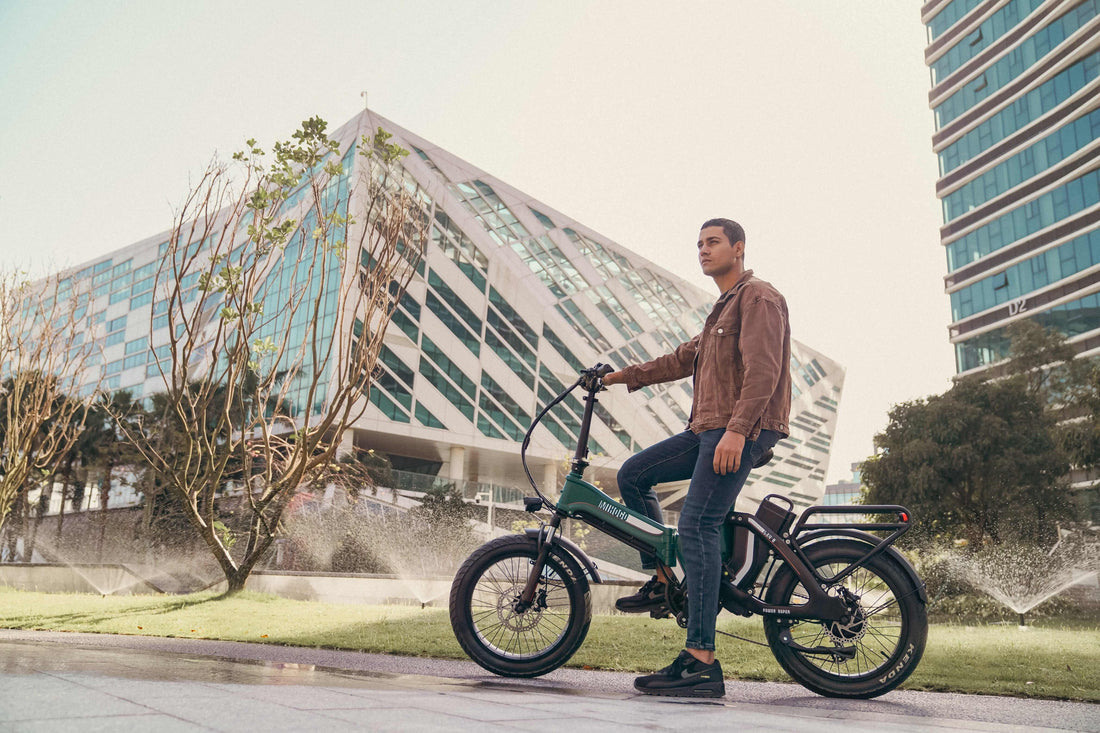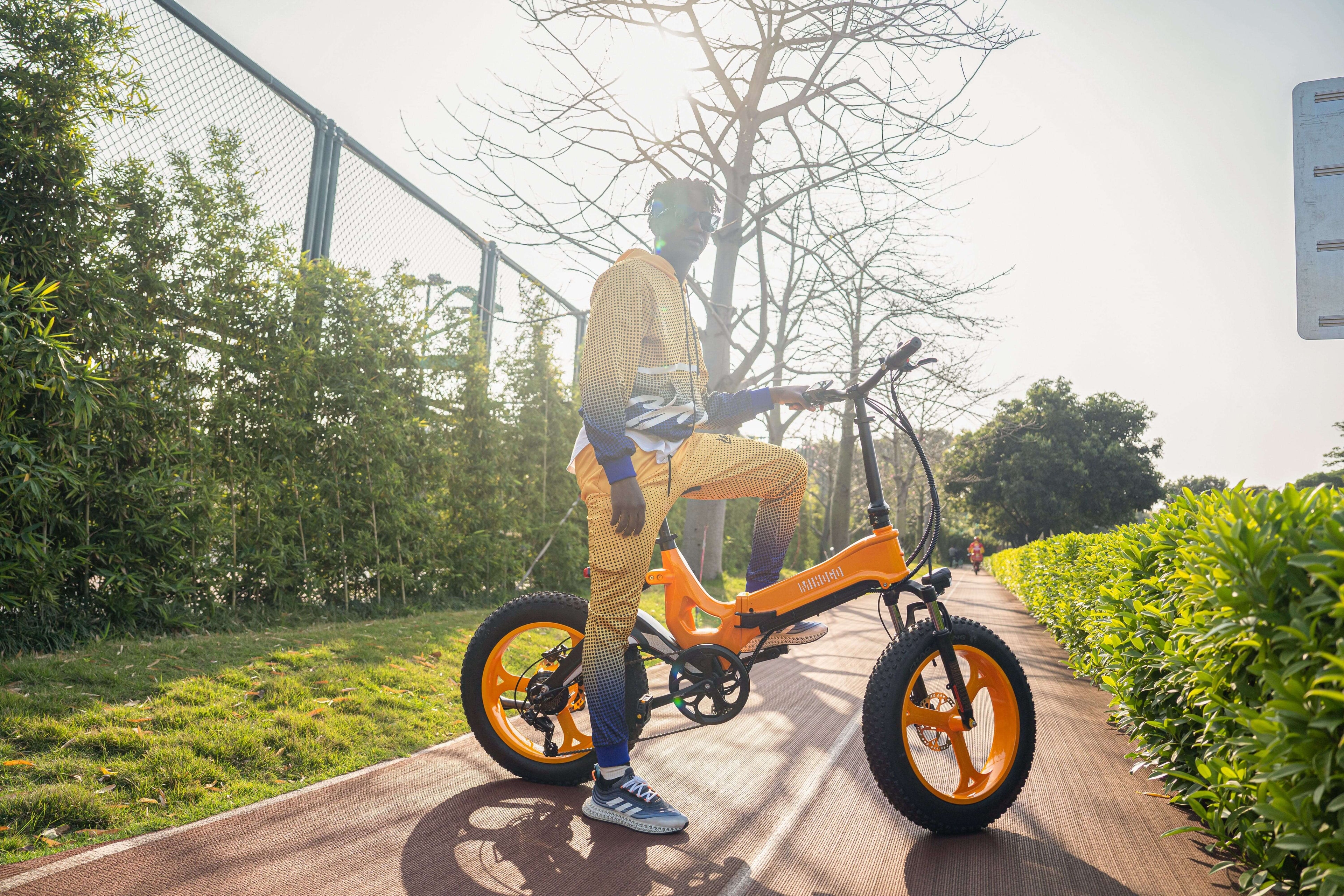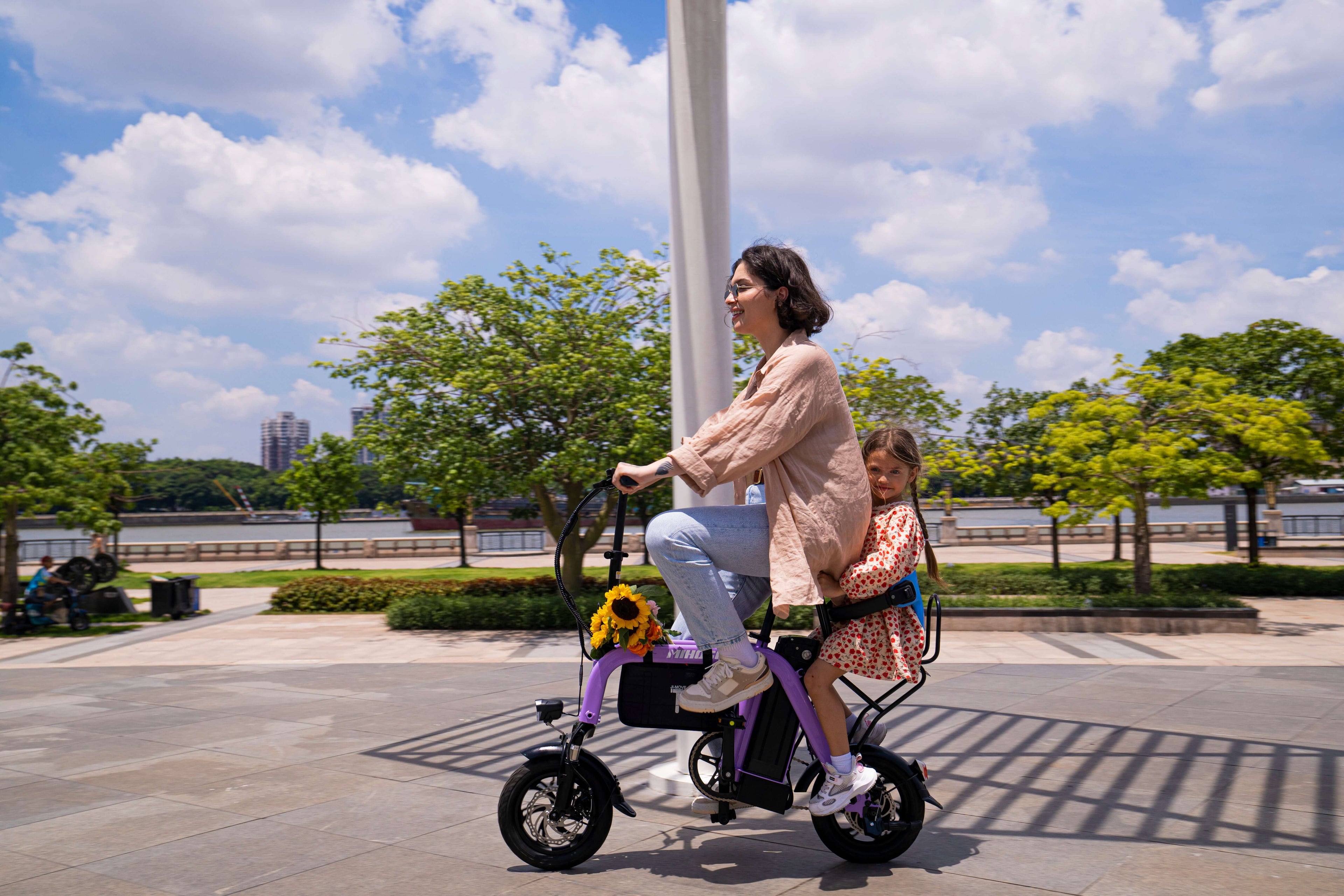If you've noticed your Mihogo e-bike battery depleting faster than expected, you're not alone. Whether you own the high-performance Air750 Max carbon fiber model, the versatile ONE Utility ebike, the compact RX 2.4 folding commuter, or the agile Mihogo Mini, understanding battery drain causes is crucial for maximizing your riding experience and investment.
Understanding Your Mihogo E-Bike Models and Optimal Usage
Mihogo Air750 Max - Carbon Fiber Performance Leader
- Terrain Specialty: Road cycling, long-distance touring, smooth bike paths
- Range: 121 miles | Motor: 750W | Speed: 25MPH
- Battery Optimization: Best for sustained moderate speeds on paved surfaces
- Rider Height: 5'7" - 6'10"
MIHOGO ONE Utility - All-Purpose Powerhouse
- Terrain Specialty: Urban commuting, cargo hauling, family rides
- Range: 167 miles | Motor: 750W | Speed: 25MPH
- Battery Optimization: Excellent for consistent city riding with moderate loads
- Rider Height: 5'7" - 6'10"
MIHOGO RX 2.4 - Compact Folding Commuter
- Terrain Specialty: City streets, bike lanes, multimodal transport
- Range: 40 miles | Motor: 500W | Speed: 23MPH
- Battery Optimization: Designed for shorter urban commutes with frequent stops
- Rider Height: 5'3" - 6'5"
Mihogo Mini - Lightweight Urban Navigator
- Terrain Specialty: Flat urban areas, recreational riding, neighborhood trips
- Range: 62 miles | Motor: 350W | Speed: 21.9MPH
- Battery Optimization: Perfect for leisure rides and short-distance travel
- Rider Height: 5'1" - 6'4"
Top 8 Reasons Your Mihogo Battery Drains Fast
1. Aggressive Riding Habits (Most Common Cause)
High-Speed Riding Riding your Mihogo at maximum speeds dramatically increases power consumption. The faster you go, the more power your ebike consumes, especially on models like the Air750 Max capable of 25MPH.
Quick Fix:
- Use moderate speeds (15-18 MPH) for optimal range
- Reserve high speeds for short bursts when necessary
- Utilize multiple assist levels strategically
Frequent Hard Acceleration Rapid acceleration from stops consumes significant battery power, particularly affecting shorter-range models like the RX 2.4.
Quick Fix:
- Accelerate gradually from stops
- Start pedaling before engaging motor assistance
- Use lower assist levels in stop-and-go traffic
2. Challenging Terrain and Load Factors
Hill Climbing All Mihogo models work harder on inclines, with the 350W Mini being most affected by steep terrain.
Model-Specific Impact:
- Air750 Max/ONE Utility (750W): Handle moderate hills efficiently
- RX 2.4 (500W): Noticeable power consumption on hills
- Mihogo Mini (350W): Significant drain on any incline
Heavy Cargo and Passengers The ONE Utility's cargo capabilities can impact battery life when fully loaded.
Optimization Tips:
- Distribute weight evenly
- Remove unnecessary items
- Use lower assist levels when carrying cargo
3. Environmental Conditions
Temperature Extremes When you ride your electric bike in very hot weather, this will affect the movement of ions inside cells, which makes the chemical processes that occur inside the cell difficult.
Cold Weather Impact:
- Reduces battery capacity by 20-40%
- Affects all Mihogo models equally
- More noticeable on longer rides
Hot Weather Effects:
- Can trigger Battery Management System (BMS) protection
- Reduces chemical efficiency
- May cause temporary power limitations
4. Battery Management System (BMS) Issues
BMS Protection Mode If there is a problem with the BMS and it is unable to read the battery cell voltage correctly, it will cause the battery to shut down quickly.
Symptoms:
- Sudden power cuts at partial charge
- Inconsistent range readings
- Longer charging times
Solution:
- Perform BMS reset by disconnecting battery for 10 minutes
- Calibrate battery by full charge/discharge cycle monthly
- Contact Mihogo support for persistent issues
5. Improper Charging Practices
Fast Charging Overuse Using fast chargers repeatedly can degrade battery cells over time, reducing overall capacity.
Charging Mistakes:
- Leaving battery at 100% charge for extended periods
- Charging in extreme temperatures
- Using non-original chargers
Best Charging Practices:
- Charge between 20-80% for daily use
- Store at 50-60% charge for long periods
- Use original Mihogo chargers only
6. Age-Related Battery Degradation
Natural Capacity Loss Typically, lithium-ion batteries used in ebikes have a lifespan of 2-3 years, depending on usage and maintenance.
Signs of Aging Battery:
- Gradually decreasing range
- Longer charging times
- Reduced power output on hills
7. Excessive Use of Power-Hungry Features
Throttle-Only Riding When you rely only on the throttle while riding your ebike, this will lead to the battery draining fast because you are making the bike do all the work.
Features That Drain Battery:
- Continuous throttle use without pedaling
- High-power assist levels unnecessarily
- Integrated lights and accessories
8. Mechanical and Maintenance Issues
Tire Pressure Under-inflated tires increase rolling resistance, forcing the motor to work harder.
Chain and Drivetrain Poor maintenance creates additional resistance that the motor must overcome.
Regular Maintenance Checklist:
- Check tire pressure weekly
- Lubricate chain monthly
- Inspect brake alignment
- Clean battery terminals
Model-Specific Battery Optimization Strategies
Air750 Max Carbon Fiber Optimization
- Best Range Technique: Maintain 18-20 MPH on flats, use moderate assist on hills
- Terrain Strategy: Stick to paved roads and smooth bike paths
- Power Management: Leverage the 750W motor efficiently with cruise control speeds
ONE Utility Maximum Range Tips
- Cargo Optimization: Distribute weight in front and rear panniers
- Urban Efficiency: Use regenerative braking where available
- Family Riding: Lower assist levels when carrying passengers
RX 2.4 Folding Commuter Efficiency
- Multimodal Strategy: Fold and carry on public transport for longest trips
- Stop-and-Go Optimization: Use lowest assist level in traffic
- Storage Benefits: Remove battery for indoor charging
Mihogo Mini Range Extension
- Flat Terrain Focus: Plan routes avoiding hills when possible
- Lightweight Advantage: Remove any unnecessary accessories
- Recreational Optimization: Use for shorter, enjoyable rides rather than long commutes
Advanced Battery Management Techniques
BMS Calibration Process
- Fully charge your Mihogo battery to 100%
- Ride until battery completely depletes (not recommended frequently)
- Immediately recharge to 100% without interruption
- Repeat monthly for accurate range readings
Smart Charging Strategies
- Daily Commuters: Charge to 80% for regular use
- Weekend Warriors: Full charge before long rides only
- Storage: Maintain 50-60% charge during off-season
Temperature Management
- Store battery indoors during extreme weather
- Allow battery to reach room temperature before charging
- Use insulated battery covers in cold climates
Troubleshooting Fast Battery Drain
Step 1: Riding Habit Analysis
- Track speed, assist levels, and terrain for one week
- Note range differences between riding styles
- Identify power-hungry habits
Step 2: Environmental Assessment
- Monitor temperature during rides
- Check for consistent performance in similar conditions
- Note seasonal changes in range
Step 3: Battery Health Check
- Measure charging time from 20% to 80%
- Compare current range to manufacturer specifications
- Look for physical signs of battery wear
Step 4: System Reset
- Perform BMS reset procedure
- Update any available firmware
- Recalibrate battery management system
When to Seek Professional Help
Contact Mihogo support or authorized technicians if you experience:
- Sudden 50% range reduction
- Battery overheating during normal use
- Charging failures or error messages
- Swelling or physical damage to battery
Preventive Maintenance for Maximum Battery Life
Daily Care
- Clean battery contacts monthly
- Store in moderate temperatures (50-77°F)
- Avoid complete discharges
Weekly Maintenance
- Check tire pressure
- Inspect charging port for debris
- Monitor range consistency
Monthly Tasks
- Battery Calibration Cycle - Full charge/discharge for accurate readings
- Deep clean battery terminals
- Update riding data tracking
Seasonal Preparation
- Winter Storage Protocol - Proper battery storage techniques
- Summer heat management strategies
- Inspection of electrical connections
Expert Resources and External Links
For comprehensive understanding of lithium-ion battery technology and management:
- Wikipedia: Lithium-ion Battery - Scientific overview of battery chemistry and degradation factors
- Battery University: How to Prolong Lithium-based Batteries - Expert guidance on battery care and longevity
Fast battery drain in Mihogo e-bikes is usually preventable through proper riding techniques, appropriate terrain selection, and consistent maintenance. By understanding your specific model's strengths and implementing these optimization strategies, you can significantly extend both daily range and overall battery lifespan. Remember: gradual acceleration, moderate speeds, and proper charging habits are your best tools for maximizing battery performance.








